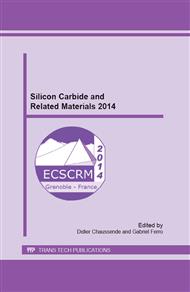p.104
p.108
p.115
p.121
p.125
p.129
p.133
p.137
p.141
Cleaning Process for Using Chlorine Trifluoride Gas Silicon Carbide Chemical Vapor Deposition Reactor
Abstract:
The silicon carbide CVD reactor cleaning process was studied by means of detaching silicon carbide particles, which was formed on the silicon carbide coated carbon susceptor surface during the silicon carbide film deposition. The contact points between the particles and the susceptor surface were etched using chlorine trifluoride gas at temperatures lower than 290 °C for 120 min. During this process, the carbon susceptor covered with the silicon carbide coating film suffered from little damage while achieving cleaning.
Info:
Periodical:
Pages:
125-128
Citation:
Online since:
June 2015
Authors:
Keywords:
Price:
Сopyright:
© 2015 Trans Tech Publications Ltd. All Rights Reserved
Share:
Citation:


